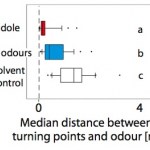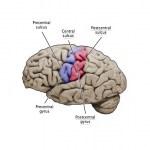Sensation and Perception
A version of this post was originally published on my Wordpress blog on March 15, 2010. Click the archives image to see the original post.
Most animals, at some point in their day-to-day lives, face the same problem. After they've gone out in search of food, they need to find their way home. But some of the places where these critters live lack any real visual landmarks - like the open ocean or wide expanses of desert. Instead of relying on vision, some animals have developed the ability to use olfactory (scent-related) cues to aid in navigation. Seabirds can detect subtle changes in the…
Lots of animals are well aware that bigger means scarier. In stressful or aggressive situations, for example, the hair or fur of chimpanzees, rats, cats, and even humans stands up on end (in humans, given our lack of fur, this results in goose bumps) in an effort to dissuade a potential attack. Elephant seals use a display called "rearing up" to make themselves look bigger - as if they need to look bigger in the first place!
Since some animals tend to be good at looking bigger than they truly are, visual cues may not actually be a reliable method of sizing up another individual. In addition…
My contribution for the Guardian's Science Blogging Festival has been posted!
Healthy, sane humans do not stab themselves in the thighs, or bathe their eyes in lemon juice. So why do we so love to assault one of the most sensitive organs in the human body, the tongue, with what amounts to chemical warfare? Chillies are unique among foods that we should otherwise not enjoy. For example, humans also have natural aversions to the bitterness of coffee or the harshness of tobacco, but those substances have some addictive qualities, which might make them desirable. Capsaicin, the compound that…
This talk, from last spring's TEDxUSC (for those not in the know, USC held the first ever TEDx event, in 2009), is made of awesome, and worth watching in its entirety. It will be especially interesting for those who have read The Invisible Gorilla.
As I'm always looking for good teaching tips, here are a few good things that the presenter, Al Seckel, did.
1. His powerpoint, with few exceptions, is mostly not-text. When there is text, it is limited to just a few bulletpoints. (this is true until the last 3-4 minutes, when it gets too text-heavy)
2. He uses still images, videos, audio, and…
If there is one book that every human should read, it is The Invisible Gorilla, by Chris Chabris and Dan Simons.
I suppose that's a pretty bold statement to make. Let me explain. As a student of psychology, and as someone who studies and writes about the mind, I am overwhelmed with the general perception among the lay public that "social science findings often reaffirm or echo what common sense observations tell us." But the truth is that common sense observations often lead us astray. We have very little insight into the way our minds actually operate. And the thing is, this is likely a…
There are some great questions coming in to Ask a Scienceblogger! If you (or your kids?) have a question you want answered by a scienceblogger drop by Page 3.14 (the blog of the SB overlordz) and leave your question in the comments on this post.
Tyler asked:It's said that the left hemisphere of the brain controls the right half of the body and vice versa. Does this apply to the processing of audio and visual stimulus of the ears and eyes as well? Does the left half of the brain process what the right eye sees and vice versa?
There's actual a few questions in here, so let's break this apart…



